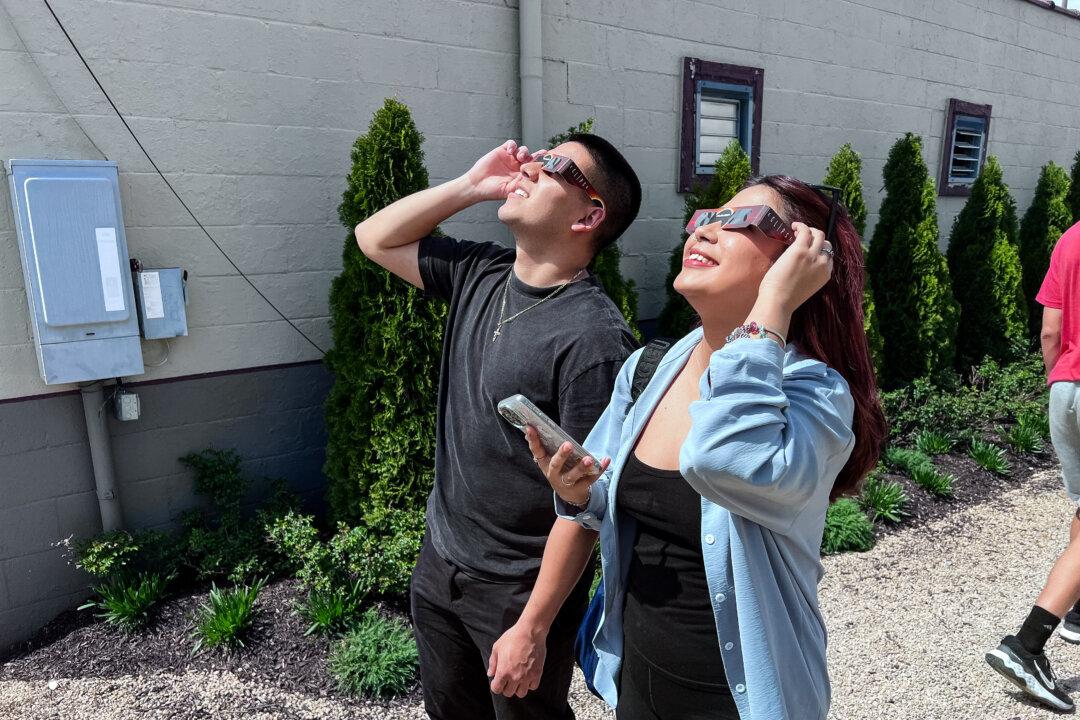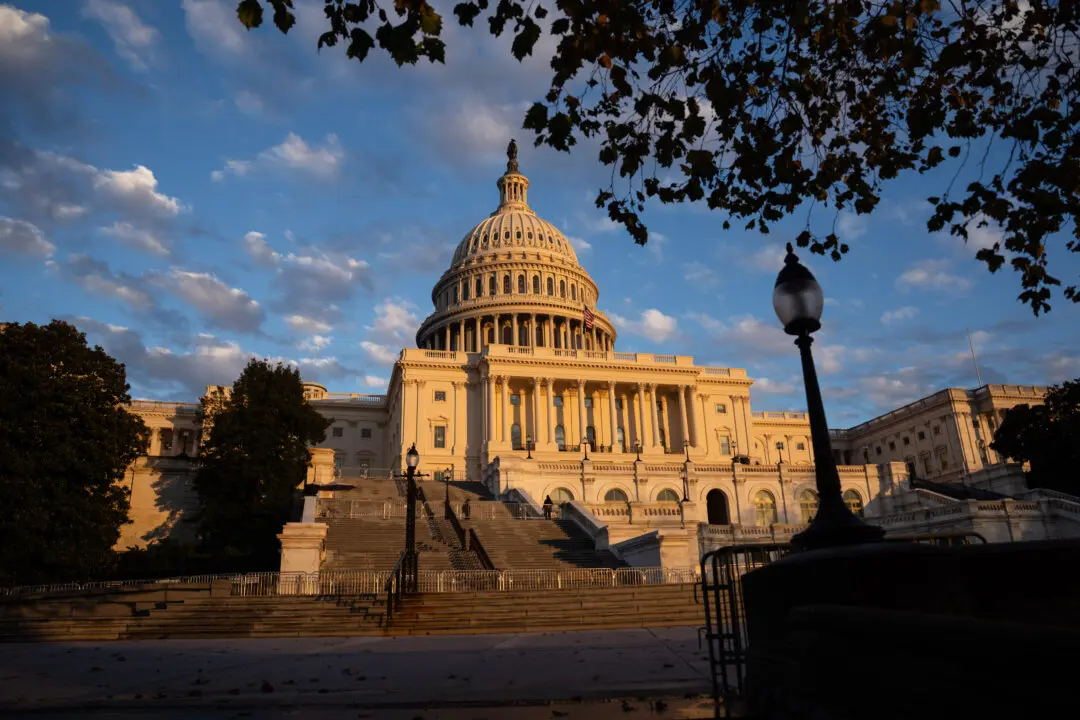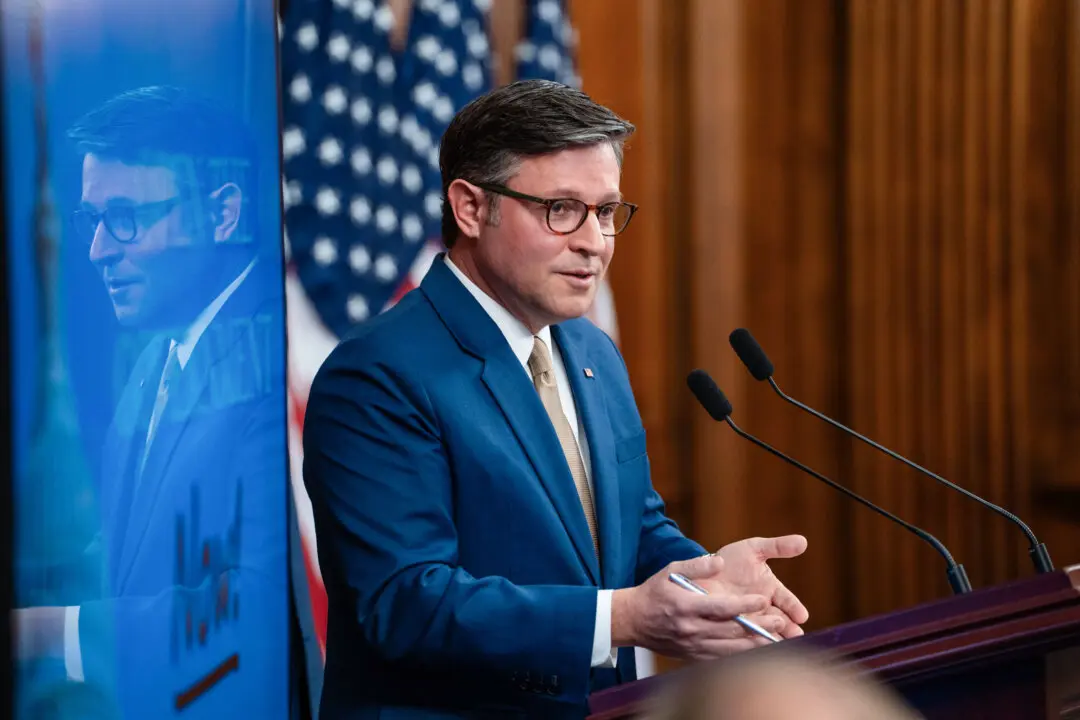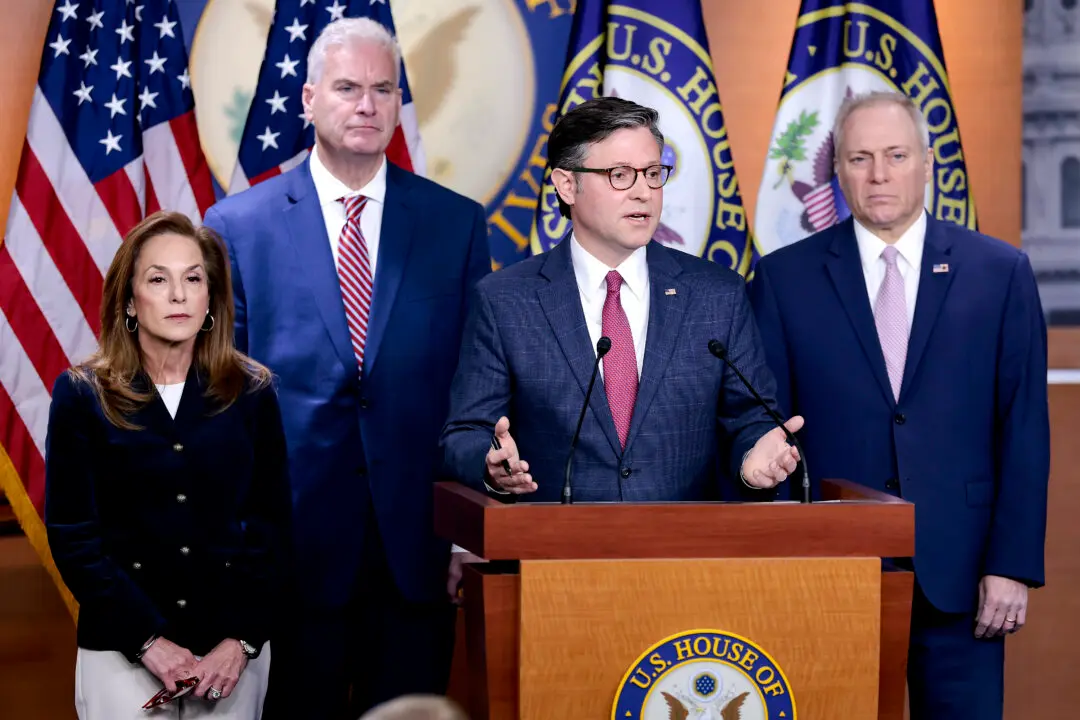INDIANAPOLIS—Crowds across North America stood transfixed on April 8 as the moon temporarily blocked the light of the sun, casting a shadow over a 115-mile-wide swath of planet Earth.
As the moment of totality approached, a hush fell over the thousand or so people gathered at the Indiana State Fairgrounds. Moments later, silence gave way to cheers, children shrieking, sighs of amazement, and shouts of “Awesome!”






